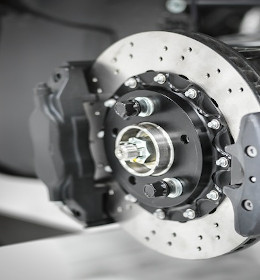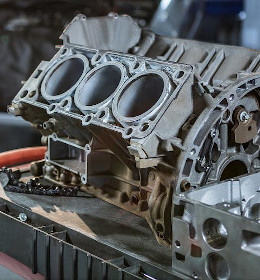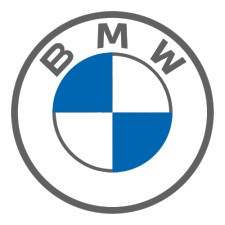Que signifie votre code Code Défaut MERCEDES ?
Grace au système OBD, les
Mercedes
fabriqués après 1996 sont normalement équipés d'une prise diagnostique OBD.
Si l'ordinateur de la voiture rencontre un problème,un code d'erreur ou un code de diagnostic (DTC)
sera stocké dans la mémoire de l'ECU de la voiture.
Avec un lecteur OBD branché sur le port OBD (On-Board Diagnostics) de la voiture, vous pouvez lire la liste des codes stockés, et donc découvrir quel est le problème.
Les codes suivent une formule permettant de savoir généralement quel est le problème avant même de regarder le tableau ci-dessous.
Nous vous présentons ci-dessus une liste très complète des différents codes défauts possibles.
Si le code défaut de votre auto s'affiche au tableau de bord, vous n'aurez peut-être même pas besoin d'un lecteur OBD . il sera dans la liste .
Réparer le code défaut de votre auto, c'est potentiellement simple à faire avec vos revues et méthodes techniques.

Réparer le code défaut de votre auto, c’est potentiellement simple à faire avec nos revues et méthodes techniques
| Code | Libellé |
|---|---|
| P109A | Component G2/7 (Alternator with LIN bus) has a malfunction. |
| P109B | Control unit N3/35 (CDI control unit) has received no LIN message from component G2/7 (Alternator with LIN bus). |
| P109C | The maximum rail pressure was exceeded. |
| P109D | The minimum rail pressure was dropped below/not reached. |
| P109E | The minimum rail pressure was dropped below/not reached. |
| P109F | The maximum rail pressure was exceeded. |
| P10A0 | The number of combustion misfires at cylinder 6 is too high. |
| P10A1 | The number of combustion misfires at cylinder 1 is too high. |
| P10A2 | The number of combustion misfires at cylinder 4 is too high. |
| P10A3 | The number of combustion misfires at cylinder 2 is too high. |
| P10A4 | The number of combustion misfires at cylinder 5 is too high. |
| P10A5 | The number of combustion misfires at cylinder 3 is too high. |
| P10A6 | The number of combustion misfires at cylinder 6 is too high. |
| P10AC | Component B16/12 (Temperature sensor upstream of SCR catalytic converter) has a plausibility error |
| P10AD | Component B16/12 (Temperature sensor upstream of SCR catalytic converter) has a plausibility error |
| P10AE | Component B16/12 (Temperature sensor upstream of SCR catalytic converter) has a plausibility error |
| P10AF | Component B16/12 (Temperature sensor upstream of SCR catalytic converter) has a plausibility error |
| P10B0 | Component B16/12 (Temperature sensor upstream of SCR catalytic converter) has a plausibility error |
| P10B1 | Component B16/12 (Temperature sensor upstream of SCR catalytic converter) has a plausibility error |
| P10B2 | Component B16/11 (Temperature sensor upstream of turbocharger) has a plausibility error |
| P10B4 | Component B19/19 (Temperature sensor upstream of diesel particulate filter) has a plausibility error |
| P10B5 | Component B16/12 (Temperature sensor upstream of SCR catalytic converter) has a plausibility error |
| P10B6 | Component B16/12 (Temperature sensor upstream of SCR catalytic converter) has a plausibility error |
| P10B7 | Component B16/12 (Temperature sensor upstream of SCR catalytic converter) has a plausibility error |
| P10B9 | Component B16/12 (Temperature sensor upstream of SCR catalytic converter) has a plausibility error |
| P10BA | Component B16/12 (Temperature sensor upstream of SCR catalytic converter) has a plausibility error |
| P10BD | Event:No CAN message was received from control unit A1 (Instrument cluster). |
| P10BE | Component B16/12 (Temperature sensor upstream of SCR catalytic converter) has a plausibility error |
| P10BF | Component A27/2 (Viscous fan) has Open circuit. |
| P10C0 | Component A27/2 (Viscous fan) has Excess temperature. |
| P10C1 | Component A27/2 (Viscous fan) has Short circuit to positive. |
| P10C2 | Component A27/2 (Viscous fan) has Short circuit to ground. |
| P10C3 | The boost pressure sensor has a malfunction. |
| P10C7 | Component 'M72/2 (Intake port shutoff actuator)' sticks. |
| P10CC | The difference between the measured temperature and the calculated temperature of component B19/21 (Exhaust gas recirculation cooler temperature sensor) is too great |
| P10CD | The difference between the measured temperature and the calculated temperature of component B19/21 (Exhaust gas recirculation cooler temperature sensor) is too great |
| P10D1 | The control deviation during rail pressure regulation is too high. |
| P10D3 | Adjustment of injector injection quantities Cylinder 1 |
| P10D4 | Adjustment of injector injection quantities Cylinder 4 |
| P10D5 | Adjustment of injector injection quantities Cylinder 2 |
| P10D6 | Adjustment of injector injection quantities Cylinder 5 |
| P10D7 | Adjustment of injector injection quantities Cylinder 3 |
| P10D8 | Adjustment of injector injection quantities Cylinder 6 |
| P10D9 | The coolant temperature is below the coolant thermostat specified temperature. |
| P10DA | Component B11/19 (Coolant temperature sensor) has a plausibility error |
| P10DB | The dynamic test of component B40/8 (Engine oil sensor) was not successful. |
| P10DC | Component Y76/18 (Cylinder 1 injector) has Open circuit. |
| P10DD | Component Y76/21 (Cylinder 4 injector) has Open circuit. |
| P10DE | Component Y76/19 (Cylinder 2 injector) has Open circuit. |
| P10DF | Component Y76/22 (Cylinder 5 injector) has Open circuit. |
| P10E0 | Component Y76/20 (Cylinder 3 injector) has Open circuit. |
| P10E1 | Component Y76/23 (Cylinder 6 injector) has Open circuit. |
| P10E2 | The number of combustion misfires at cylinder 1 is too high. |
| P10E3 | The number of combustion misfires at cylinder 4 is too high. |
| P10E4 | The number of combustion misfires at cylinder 2 is too high. |
| P10E5 | The number of combustion misfires at cylinder 5 is too high. |
| P10E6 | The number of combustion misfires at cylinder 3 is too high. |
| P10E7 | The number of combustion misfires at cylinder 6 is too high. |
| P10E8 | The number of combustion misfires is too high at several cylinders. |
| P10EF | Component B19/21 (Exhaust gas recirculation cooler temperature sensor) has a plausibility error |
| P10F0 | One or more signals sent from control unit 'N118/5 (AdBlue control unit)' via the CAN bus is implausible. |
| P10F1 | The maximum rail pressure was exceeded. |
| P10F2 | The minimum rail pressure was dropped below/not reached. |
| P10F3 | The minimum rail pressure was dropped below/not reached. |
| P10F4 | The maximum rail pressure was exceeded. |
| P10F5 | The maximum rail pressure was exceeded. |
| P10F7 | The number of combustion misfires at cylinder 1 is too high. |
| P10F8 | The number of combustion misfires at cylinder 4 is too high. |
| P10F9 | The number of combustion misfires at cylinder 2 is too high. |
| P10FA | The number of combustion misfires at cylinder 5 is too high. |
| P10FB | The number of combustion misfires at cylinder 3 is too high. |
| P1101 | Ambient air temperature display temperature sensor |
| P1103 | Ambient air temperature display temperature sensor |
| P1104 | Ambient air temperature display temperature sensor |
| P1105 | Atmospheric pressure sensor in the control unit |
| P1110 | The supply voltage of component A97/2 (NOx sensor control unit downstream of SCR catalytic converter) is too low (undervoltage) |
| P1112 | The supply voltage of component A97/1 (NOx sensor control unit upstream of SCR catalytic converter) is too low (undervoltage) |
| P1114 | EfficiencyDiesel particulate filter. |
| P1115 | The regeneration frequency of the diesel or gasoline particulate filter is not OK |
| P1116 | Regeneration of diesel particulate filter not completed successfully. |
| P1117 | No AdBlue was metered out. |
| P1118 | Component A97/2 (NOx sensor control unit downstream of SCR catalytic converter) has a plausibility error. |
| P1119 | Component A97/2 (NOx sensor control unit downstream of SCR catalytic converter) has a plausibility error. |
| P111A | Component A97/1 (NOx sensor control unit upstream of SCR catalytic converter) has a plausibility error. |
| P111B | Component A97/1 (NOx sensor control unit upstream of SCR catalytic converter) has a plausibility error. |
| P111C | DFC AFSLd2AdjValB1: Air mass sensor bank1, drift compensation load point 2 faulty |
| P111E | DFC AFSLd2AdjValB2: Air mass sensor bank2, drift compensation load point 2 faulty. |
| P112A | The boost pressure control flap has a malfunction. |
| P1130 | The signal voltage of component 'Oxygen sensor upstream of catalytic converter' is implausible |
| P1131 | The heater of component 'Oxygen sensor upstream of catalytic converter' has a malfunction. |
| P1135 | The signal voltage of component 'Oxygen sensor downstream of catalytic converter' is implausible |
| P1136 | The signal voltage of component 'Oxygen sensor downstream of catalytic converter' is implausible |
| P1146 | The power supply of injector group 'A' has an electrical fault |
| P1146 | Mass airflow meter 2 circuit/open |
| P1147 | Coolant temperature sensor 2 circuit/open |
| P1148 | Oxygen sensor 2 (cylinder bank 1) has an electrical fault. |
| P1149 | Mass airflow meter 2 circuit/open |
| P1149 | The power supply of injector group 'B' has an electrical fault |
| P114A | Oxygen sensor 2 (cylinder bank 1) has an electrical fault. |
| P114B | Oxygen sensor 2 (cylinder bank 1) has an electrical fault. |
DEFINISSEZ VOTRE MARQUE POUR ACCEDER A VOS CODES DEFAUTS
-
Revue technique RTA

Revue Technique Automobile
La revue technique de référence depuis 1946. La RTA est une revue papier pour tous publics, qui vous permet d'effectuer les petites et les grosses réparations
 Voir le descriptif
Voir le descriptif
-
Entretien courant MTA

Méthode Technique Automobile
La MTA est issue de nos outils destinés aux pros de l'auto. Ces méthodes en ligne permettent d'effectuer les opérations de maintenances de votre auto (filtres, courroies, etc.)
 Voir le descriptif
Voir le descriptif
-
Toutes réparations MTAx

Méthode Technique Automobile Expert
La MTA expert est un outil en ligne destiné aux experts en mécanique et en carrosserie, pour effectuer tous types de réparations sur une voiture.
 Voir le descriptif
Voir le descriptif















